You probably think of “beaches” when you hear someone mention “Costa Rica,” and it is a place people think of when they want to relax.
It is also a place where snorkelers like to explore.
People also surf, boat, or swim here, but what about sharks?
Contents
- So… Are There Sharks in Costa Rica?
- Shark Species in Costa Rica
- Is it Safe to Swim in Costa Rica?
- Interesting Shark Facts in Costa Rica
- Sharks in Freshwater Vs. Saltwater
- 6 Safety Tips for Swimming in Shark-infested Waters
- Summary
- Sources
- Safety in Costa Rica
- Costa Rica Safety Overview
- Frequently Asked Questions
So… Are There Sharks in Costa Rica?
Costa Rica has about 40 total shark species, with more than 30 of these reaching near extinction.
Sharks most commonly inhabit Cocos Island and the location where the Canos Island Biological Reserve operates.
Snorkelers often swim with the sharks at one of nine designated diving spots.
They usually do not seem to harm experienced divers, who have learned how to coexist with them.
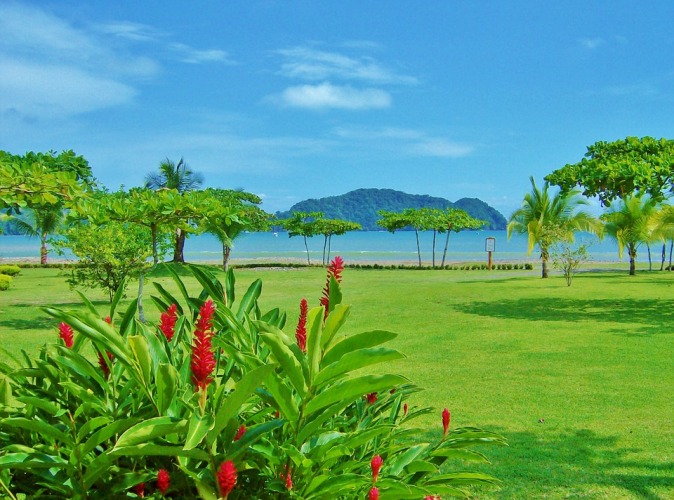
The seven primary shark species reside most often in Costa Rica.
You might see others, but these appear the most in various locations near beaches.
However, some of these sea creatures swim so deep that you might never see them.
1. Bull
You do not see sharks most of the time in Costa Rica.
However, the Bull Shark does not always handle the unexpected presence of humans.
Historians documented 22 fatal attacks around the world since the 1700s.
Some Bull Shark incidents reportedly happened by accident, however.
This species does not usually set out to kill anyone unless feeling threatened.
It also is not that picky of an eater, so it does not have much of a problem finding food.
In addition to various sea animals, it also sometimes devours birds and turtles.
Beware that this one does swim in shallow waters, but approximately 98-490 feet deep would still be too deep for most humans to swim anyway.
2. Silky
This animal, which has skin that feels as smooth as silk, does not seem to bother humans much.
It does not even swim near the shore most of the time.
They often measure up to 12 feet long at maturity and move around underwater somewhere between 600-1600 feet.
The Silky Shark will usually eat mackerel and porcupine fish or crustaceans and albacore, among other animals.
3. Nurse
This one does feed off the bottom of the ocean but seems to also enjoy staying near the water’s surface.
Its diet does not include humans.
Instead, it consumes sea urchins, fish, shellfish, squid, and stingrays.
This one lives about 25-30 years and grows up to 15 feet.
They usually only attack when provoked, and none of these incidences caused human deaths.
4. Scalloped Hammerheads
This shark acquired its name from the way it “hammers” its prey to the ocean floor.
The Scalloped Hammerhead seems to prefer stingrays but will also feed on squid and octopuses and herring or mackerels.
This one has 17 unprovoked attacks on record since the late 1500s but has never killed anyone.
It normally navigates underwater at up to 1600 feet and sometimes grows to about 12 feet long.
5. Tiger
This shark first made an appearance again on the island in 2012 after about 30 years of absence.
It is one that seems to feel the most startled and prone to attack, although that could happen with any animal who does not expect to see you.
This shark species do seem to prefer staying at sea level, but it also does dive as deep as up to 3,000 feet.
Although seemingly more likely to attack humans than other types, it does prefer to feast on crustaceans and fish and sometimes eats birds, dolphins, and more.
Killing a person for food would not be its primary motive for aggression.
6. Whale Shark
This sea creature has some characteristics in common with whales.
Thus, it has inherited the name “whale shark.”
What is more, it eats like whales do, in that they take in fish through their gills — mostly plankton.
In addition, they also live on ocean plant life and may grow up to 50 feet long.
It is one of the heaviest.
Not many other sea creatures weigh as much as 15 tons, but this one might.
Even though they have about 3,000 teeth, they do not seem to care much for human blood.
You would usually see them near coral reefs if they ever would swim near the coast, but you might not see them.
Usually, they stay at depths of 800-2,600 feet below sea level.
7. White-Tip Reef
Do not confuse this one with the Caribbean reef shark, which also could appear in Costa Rica.
The White-Tip Reef can grow up to 8 feet long and might swim to about 1,083 feet deep.
They often remain stationary on the ocean floor because they do not require movement to breathe, but they will rise to as shallow as only 26 feet underwater.
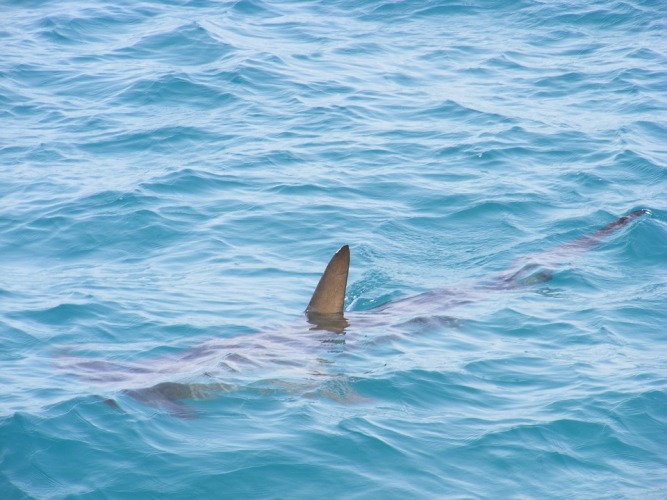
Is it Safe to Swim in Costa Rica?
If you use common sense, you can safely swim in Costa Rica.
Some beaches where people will visit the most include Papagayo Peninsula, Punta Uva, Carillo, Playa Panama, and Samara Beaches.
You will find plenty of swimming posts fully guarded by trained staff, and they will warn you of impending dangers if any were to exist.
Many safe spots exist on both the Caribbean and Pacific sides.
Interesting Shark Facts in Costa Rica
The Great White Shark from the “Jaws” movie has hundreds of unprovoked attacks on record, but it does not usually reside near Costa Rica.
In fact, shark attacks, in general, do not happen often in this country at all, despite the estimated 700 miles of coastal lands met by two major oceans.
There is only been an estimated seven unprovoked shark attacks in Costa Rica since about 1919.
The most recent one occurred in 2017, and unfortunately, it involved the loss of a 49-year-old United States woman as she dove from the country’s Cocos Island.
Apparently, the Tiger Shark made up for not spending much time in this area for three decades.
It had also committed a non-fatal attack on the deceased lady’s guide.
Located between the Caribbean Sea and the Pacific Ocean, Costa Rica would most likely have saltwater fish residing in it.
However, the Bull Shark does tolerate at least a moderate amount of freshwater.
In any case, areas like this piece of land sandwiched between two saltwater supplies would have a higher percentage of sharks inhabiting near its beaches.
Again, just because you see a shark, it does not mean the animal wants to kill you.
Whether freshwater or saltwater, stay cautious but do not panic too much.
By the way, sharks typically prefer waters between 60-70 degrees.
Therefore, they probably would stay away from the shore, where the deep waters will not feel as warm to them.
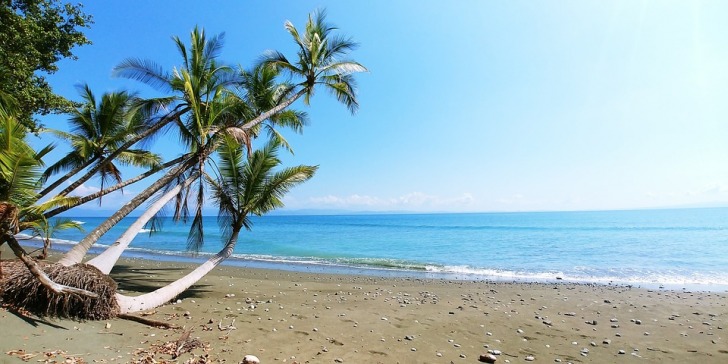
6 Safety Tips for Swimming in Shark-infested Waters
1. Stay in designated diving areas.
Touring companies will guide you through all your snorkeling adventures in those nine main diving locations.
This would keep you safe if you do not have anyone to swim with while in Costa Rica.
2. Learn the meaning of safety signals.
For instance, lifeguards will usually have a green, yellow and red light they flash.
This alerts you as to how safe the water is, with green being the safest to red meaning that you should not enter the water.
You might have heard of the hundreds of non-fatal shark attacks around the world that have occurred in this past century.
However, following the lead of people watching over you while you swim, surf, and dive in Costa Rica waters will prevent injuries and death.
3. Check tide behavior before surfing.
It always makes swimming back to shore difficult if you fall off your surfboard in deep waters.
Make sure you have an idea of how strong the waves will be before you ride them.
In fact, it seems that most shark attacks happen when surfing, boating, jet skiing, and more.
It is because of the sharks’ tendencies to stay away from the shore.
4. Do not venture too far from shore.
Even though you cannot avoid some shallow-swimming sharks, stay near the shore.
You will find it much easier to escape the waters if you do.
Especially if swimming after dark, follow this advice, but you should not really swim after dark alone anyway.
5. Swim in a group.
Safety in numbers applies to any activity, including beach swimming.
People can watch out for you and help you if an incident does occur, especially if you decide to surf for the afternoon and the waves pick up their velocity.
6. Have an emergency plan.
Even if you have a waterproof cellphone, you will want to make sure you have a way out of the water.
The lifeguards can help you learn communication signals before you decide to venture into Costa Rica waters.
However, you can communicate with your private group, such as letting them know what hand signals you may use if in danger and need help.
One person in your group may have to stay at the shore to access any emergency assistance if needed.
Summary
The fear of being bitten or killed by a shark has more truth to it than the actual number of humans ever killed on Costa Rica beaches because of them.
Sources
- https://www.newsweek.com/provoked-nurse-shark-bites-florida-woman-and-wont-let-go-460409
- http://www.sharkattackdata.com/place/costa_rica
- https://www.nationalgeographic.com/animals/article/tourist-dies-rare-shark-attack-cocos-island-costa-rica-spd
- https://www.floridamuseum.ufl.edu/shark-attacks/maps/central-america/
- http://www.sharkattackdata.com/attack/costa_rica/turtle_bogue/1919.09.12
Safety in Costa Rica
Planning a trip to Costa Rica?
Check out our safety report:
Costa Rica Safety Overview
READ THE FULL REPORT: Costa Rica Safety Review
Safety Index:
- OVERALL RISK: MEDIUM
- TRANSPORT & TAXIS RISK: MEDIUM
- PICKPOCKETS RISK: HIGH
- NATURAL DISASTERS RISK: MEDIUM
- MUGGING RISK: MEDIUM
- TERRORISM RISK: MEDIUM
- SCAMS RISK: HIGH
- WOMEN TRAVELERS RISK: MEDIUM
Frequently Asked Questions
Is the whale shark dangerous?
Surprisingly, no.
The whale shark does not pose much of a threat even though it is one of the largest and heaviest sea creatures in the world.
Because of having a similar “personality” as a whale, that is another reason for its name.
Why are so many shark species endangered?
Excess harvesting, which may not always be for a profit, has occurred.
Keep in mind that every country has different rules they follow when hunting for these valued sea creatures.
In some cases, they might seek it out for sustenance, which is allowed according to most coastal location guidelines.
Who oversees shark hunting activities around the world?
Many conservation organizations, such as the National Oceanic and Atmospheric Association, fight for laws concerning shark preservation.
Where do I find more facts about Costa Rica Shark Dangers?
Several databases will provide you with information about how many shark attacks have occurred.
Some of these sources provide statistics back to as early as the 1500s, with most offering data from at least the past 30-50 years.
Learn as much as you need to know about sharks before you come to Costa Rica.
One interactive directory has mapping tools that reveal where the unprovoked attacks have occurred.
Another database that might help is the Shark Attack Data site.
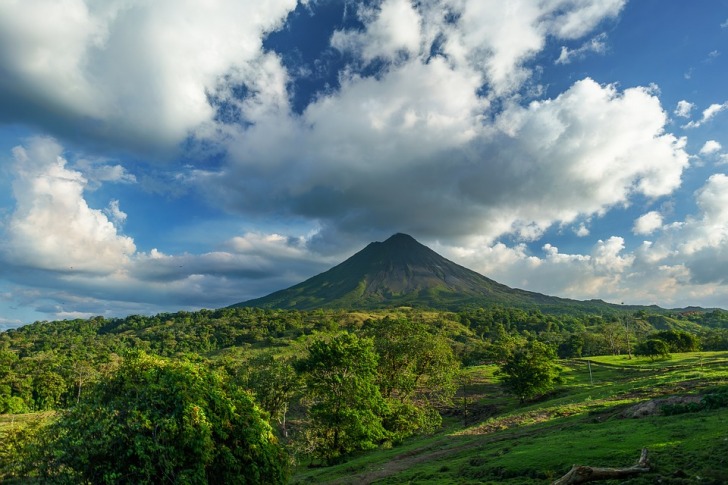
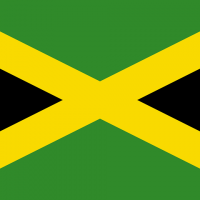










Costa Rica has a variety of shark species, but they generally do not pose a threat to humans and can be safely observed while snorkeling or diving.